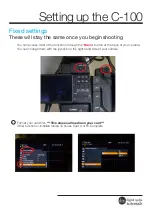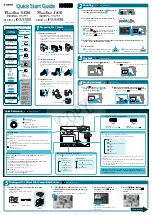
Camera Performance and Features
41
HDR Demo Mode
In planar mode the camera can be configured to output sensor rows 0 and 1. Row 1 is 4x more
responsive than row 0. The user could combine these with their own algorithm to create a High
Dynamic Range (HDR) image. HDR Demo mode is an option of the TDI Mode feature. It combines
rows 0 and 1 using the following algorithm:
Assumes row1 is 4x row0, therefore the two rows must have the same exposure time
For each pixel take the bright row pixel and divide it by four so that it is equivalent to the
darker row pixel
Use the bright row pixel if it is below 250, otherwise use the darker row pixel
Multiply the result by configurable Scale Factor
That is:
If (row1 < 250) then
Output = (row1 / 4) x ScaleFactor
Else
Output = row0 x ScaleFactor
Suggestion for ScaleFactor is 250 / expected peak value of row0, (range 1-4)
Image Filters
Related Features: imageFilterMode, imageFilterType, imageFilterKernalSize,
imageFilterContrastRatio
The camera has a selection of image filters that can be used to reduce image noise.
Use the feature imageFilterMode to turn the filtering on or off. Use the feature imageFilterType to
read the user information of the type of filter that is being used.
Kernels
Use the ImageFilterKernalSize feature to select the number of pixels involved in the filter or the
kernel size. The options are: 1 x 3 and 1 x 5 filter kernels.
The 1 x 3 and 1 x 5 filter kernels are “weighted average” filters.
The 1 x 3 filter kernel uses 75% of the original pixel and 12.5% of the adjacent pixels.
12.5
%
75%
12.5
%
Figure 16. 1 x 3 kernel
The 1 x 5 filter kernel uses 50% of the original pixel and 12.5% of the adjacent two pixels on both
sides of the original pixel.
12.5
%
50%
12.5
%
12.5
%
12.5
%
Figure 17. 1 x 5 kernel
















































